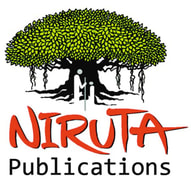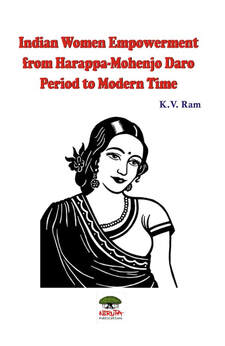|
Author : K.V. Ram Pages : 104 Contents Foreword Preface Author’s Profile Chapter-1 Harappa Mohanjo Daro to Post-Vedic Period Chapter-2 500 BC to 700 AD (Dharmasastra, Puranas, Sutra, Sruti Periods) Chapter-3 The Classical Age Women: Their Position Chapter-4 Pre-Islamic Period-before Mughal Period Chapter-5 The Period of Mughal Rule 1530 AD to 1750 AD Chapter-6 British Supremacy and Women’s Conditions in Modern India References This is a study of Indian women from prehistoric times to the present. The sources for this are Harappa and Mohenjo Daro archeological sources, Vedas, Upanishads, Epics, and Dharmashastras. They are different as authorities content, and time of composition. It is difficult to state the exact time of the works and the exact time to which the narrated events belong. Only approximate age can be said. Because of this difficulty, a general account of women’s status, position, and social conditions which influenced them over a few centuries is given.
The study covers the period from Harappa and Mohenjo Daro civilization, Aryan, Post Aryan, Vedic, Upanishad, Sutra and Epic periods. In the first chapter classical period from 500 A.D. to 700 A.D., in the second chapter pre muslim period to 500 A.D. to the end of the Delhi Sultanate, in the third chapter followed by Moghal period to 650 A.D. and then the British period are written. The last chapter gives a brief account of women’s position and social political reforms during freedom struggle and independent India to 1960. Most primary and secondary sources of the study indicate that Indian women were highly respected as mothers, as maintainers, and organisers of domestic life and loving, faithful subordinate wives; but they did not have freedom and right to shape their lives and participate in social and public affairs. The impressive thing is that there is not much change in their position and status now from the Aryan times thousand of years ago, though modern education and employment opportunities has liberalized them to some extent. There have been a few studies on Indian women published in the last six decades. I am benefited by these studies in writing this book. Reference to them is provided in the reference section at the end of the study. I would like to express my profound appreciation to my wife Vijayalakshmi Venkataram who helped to fully involve myself in writing this book by taking over our house management, to my son Ramesh V. Ram for helping with preparation maps of Indus Valley and its pictures and a brief introduction about me and my academic achievement and my daughter in law Sathya Kumari for silently helping me in many ways to complete this book. I would like to thank Mr. Ramesh M.H. of Niruta Publications for patiently typing on time, my drafts of this book and arranging to print this work on time and Mr. Mahadeva Swamy of Niruta Publications, for his help in putting through my suggestions and correcting proof, delivery of printed material on time. I am also greatful to Dr. C.R. Gopal, Editorial Board Member, Social Work Foot Prints, for his enthusiastic support. I am particularly grateful to Dr. (Professor) M.R. Kumaraswamy, the editor and publisher of Journal of Financial Management & Analysis, Bombay for his many suggestions to improve my work. I would also like to thank Mr. M.R. Seshadri Iyengar, Secretary of Malleshwaram Education Society and Mr. M.S. Seetha Ram Rao for their encouragement to my work and its early completion. K.V. Ram
0 Comments
Leave a Reply. |
50,000 HR PROFESSIONALS ARE CONNECTED THROUGH OUR NIRATHANKA HR GROUPS.
YOU CAN ALSO JOIN AND PARTICIPATE IN OUR GROUP DISCUSSIONS. Archives
July 2022
Categories
All
|
SITE MAP
SiteTRAININGJOB |
HR SERVICESOTHER SERVICESnIRATHANKA CITIZENS CONNECT |
NIRATHANKAPOSHOUR OTHER WEBSITESSubscribe |
MHR LEARNING ACADEMY
50,000 HR AND SOCIAL WORK PROFESSIONALS ARE CONNECTED THROUGH OUR NIRATHANKA HR GROUPS.
YOU CAN ALSO JOIN AND PARTICIPATE IN OUR GROUP DISCUSSIONS.
YOU CAN ALSO JOIN AND PARTICIPATE IN OUR GROUP DISCUSSIONS.
|
|



 RSS Feed
RSS Feed





